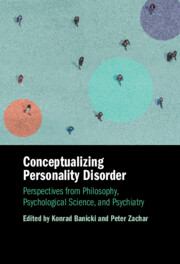 Conceptualizing Personality Disorder
Conceptualizing Personality Disorder Book contents
- Conceptualizing Personality Disorder
- Conceptualizing Personality Disorder
- Copyright page
- Contents
- Figures
- Tables
- Contributors
- Introduction
- Part I Historical Perspectives
- Part II Contemporary Approaches to Traditional Conceptual Perspectives
- Part III Novel Conceptual Approaches to Personality Disorder
- Part IV Exploring Negative Consequences of Diagnosing Personality Disorder
- Part V Perspectives on Borderline and Narcissistic Personality
- 19 How and Why Emptiness Manifests in Everyday Life
- 20 Empathy Deficits in the Development and Maintenance of Narcissistic Personality Disorder
- 21 Interaffectivity Disturbances in Narcissistic Personality Disorder
- 22 Narrative Accounts of the Self
- Index
- References
20 - Empathy Deficits in the Development and Maintenance of Narcissistic Personality Disorder
from Part V - Perspectives on Borderline and Narcissistic Personality
Published online by Cambridge University Press: 25 June 2025
- Conceptualizing Personality Disorder
- Conceptualizing Personality Disorder
- Copyright page
- Contents
- Figures
- Tables
- Contributors
- Introduction
- Part I Historical Perspectives
- Part II Contemporary Approaches to Traditional Conceptual Perspectives
- Part III Novel Conceptual Approaches to Personality Disorder
- Part IV Exploring Negative Consequences of Diagnosing Personality Disorder
- Part V Perspectives on Borderline and Narcissistic Personality
- 19 How and Why Emptiness Manifests in Everyday Life
- 20 Empathy Deficits in the Development and Maintenance of Narcissistic Personality Disorder
- 21 Interaffectivity Disturbances in Narcissistic Personality Disorder
- 22 Narrative Accounts of the Self
- Index
- References
Summary
I scrutinize the common idea that Narcissistic Personality Disorder (NPD) involves empathy deficits. I argue that empathy is foremost an epistemic mechanism, leading to different forms and levels of interpersonal understanding. Interactive difficulties can result in profound interpersonal misunderstanding, which leaves some people in persistent doubt about other people’s perspectives and about their own social standing. Such status blindness, as I will call it, can explain some specific symptoms of NPD. I introduce relevant conceptual distinctions, devise a complex map of empathy that describes four types and four features, and apply the map to NPD. Finally, I specifically discuss empathy deficits in being the target of the empathy of others.
Keywords
Information
- Type
- Chapter
- Information
- Conceptualizing Personality DisorderPerspectives from Philosophy, Psychological Science, and Psychiatry, pp. 352 - 372Publisher: Cambridge University PressPrint publication year: 2025